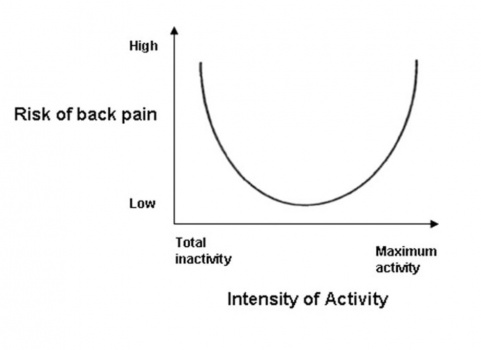Inactivity and Low Back Pain
Introduction[edit | edit source]
Definitions[edit | edit source]
Epidemiology[edit | edit source]
Outcome measures[edit | edit source]
Biomechanics[edit | edit source]
Occupational inactivity[edit | edit source]
Evidence[edit | edit source]
Evidence for[edit | edit source]
A Dutch cross-sectional study from 2009 investigated the U-shaped relationship between physical activity and low back pain. The study concluded that both extremes of physical activity- excess activity or insufficient activity associated with a high risk of LBP (fig x). An increased prevalence in LBP was also found in inactive participants with sedentary behavior. In addition to that, there is a potential gender-related risk for LBP in inactivity because the result is more significant in women compared to men.
Another cross-sectional study from 2015 explored the associations between physical inactivity and intervertebral disc height, spinal muscles fat content and low back pain and disability. Results concluded that participants with lower activity levels had higher BMI, narrower intervertebral disc height, higher fat content of multifidus, increased risk of high-intensity pain/disability ratio after adjustment for age, gender and BMI.







